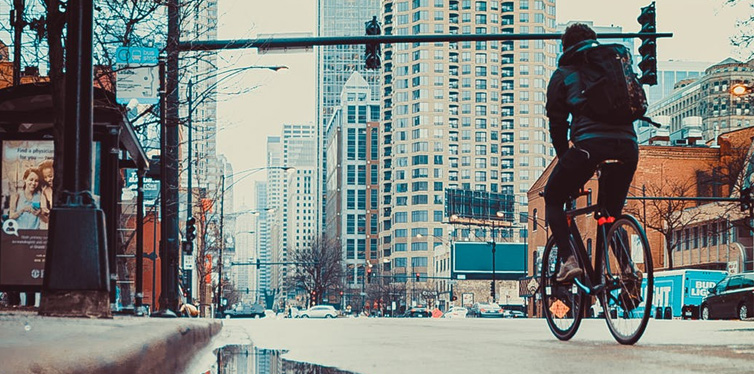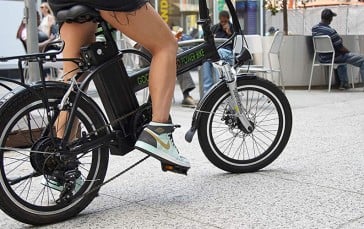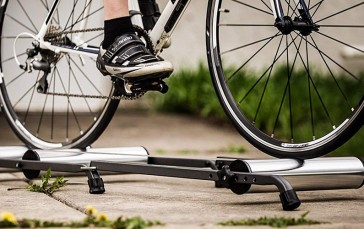How To Reduce Your Carbon Footprint
The bad effects have climate change has been making waves in recent years. Even though most of us are not aware of it, many of our daily habits increase our carbon footprints and thus, have a negative influence on the climate. On average, people in industrial nations produce around eleven tons of carbon dioxide per year. However, the global goal of combating climate change is only two tons per person, which clearly shows that we live on too big a climate foot. In order to reduce your carbon footprint, you can make a small contribution each day with various measures. We have enlisted ten of them below.

1. Watch What You Eat
Sustaining a regional diet not only reduces the environmental costs of transportation but also supports local farmers instead of big retailers. The fact that food is transported from where it was grown or grown to where it is processed and packaged – and then taken to your grocery store has a high price for the environment. That’s why it’s vital to look for regional food, according to the season, at a farmer’s markets in your area, in farm shops, in health food stores or in your supermarket. Or you can even join a food cooperation.
Additionally, when it comes to food, a vegan diet immensely helps to reduce C02 emissions. Not a necessary step, but a vegan diet, unlike what most people think, can be very delicious and satisfying and it is often healthier (less saturated fat and fewer calories, for example). But above all, what makes a vegan diet more sustainable for the environment is that as there is no meat to eat, no dairy products and no eggs to stay away from, it avoids all the perils that come with industries that are terrible for the environment – and terribly cruel to animals.
2. Drive Around Less
Using your vehicle less is a great way to reduce your carbon footprint. For example, you can start working from home – at least part of the time if your employer permits it. Also, plan combined rides to be less on the way or move nearer to your place of work or to a local area that has all the essential, every-day amenities.

3. Cycle And Walk More
It takes time to reduce car use, but once you realize it, you can make small changes, one after the other. Start by walking or cycling more – or using the bus and train. These changes in your work travel patterns are also much better for your health as they encourage you to move more than driving does.
4. Travel By Airplane Less
Flights are a major contributor to climate change. If flying to meetings is a regular part of your work, you can reduce your long-distance travel with the use of conference room cameras – if your employer permits. Also, you can take regular holidays closer to where you live with long-haul flight reserved for once a year vacation. Although this might not seem too exciting, one benefit that comes with re-thinking your travel habits is the reduction of your travel expenses.

5. Buy Only What You Need
Buying too many things is useless and wasteful. Everything needs a lot of resources and contributes significantly to climate change. So try to buy a lot less by separating your list of essentials ‘needs’ from those ‘wants’ that are driven by greed.
Also, instead of buying products for temporary usage, try to borrow instead. For example, you can opt for books from the lending library rather than purchasing new ones. Also, make sure that what you have lasts longer and find innovative ways to reuse what you already have or even make a thing or two for yourself. You will soon start to realize that those ‘wants’ were not actually necessary, and your life is still as sufficient without them.
6. Buy Used Goods
Purchasing use items prevents you from buying new goods and consuming all the resources that go into production and transportation. This way, you can extend the life of items that have already been produced and used. Look at flea markets, second-hand stores, and antique shops. Sometimes you find some really cool used things that are of equal or even better quality than the newer items.

7. Live In A Smaller Apartment
Obviously, you cannot change your living conditions overnight, but living in a smaller home is something that you can do in the long run. A smaller home uses fewer resources in construction – and in operation, it also uses less electricity, water, heat, and thus fewer emissions. When you separate yourself from many materialistic things and think about your needs, you will realize that you need less space.
8. Waste Less Water
Try not to take a bath every day and do not shower for hours. Wet yourself, turn off the water, soak yourself, turn the water back on and cleanse yourself. What’s more, aim to water your lawn and wash your car at home less often than before as this saves water immensely. As for your clothes, wash them in batches if you use a washing machine or switch to handwashing for better control of water used. You can also use water sparingly when washing your hands or dishes.

9. Consume Less Energy In The Home
Even without a smaller apartment, there are countless ways to reduce your energy consumption. Cool and heat your apartment less. Turn off the light. Disconnect the devices you do not need at that moment and dry your laundry more often on a clothes horse.
10. Opt For A Paperless Office
Many offices and households consume tons of paper, but most of it is unnecessary. For example, many people often print and file documents that can be read and filed online. For better organization, archive all your documents in folders that are easy to access. Likewise, newspapers and magazines should be read online instead of buying a hard copy.
Also, request for invoices and other documents to be sent electronically or online instead of having them sent to you by paper mail and try to stop sending faxes just for the sake of faxing.










